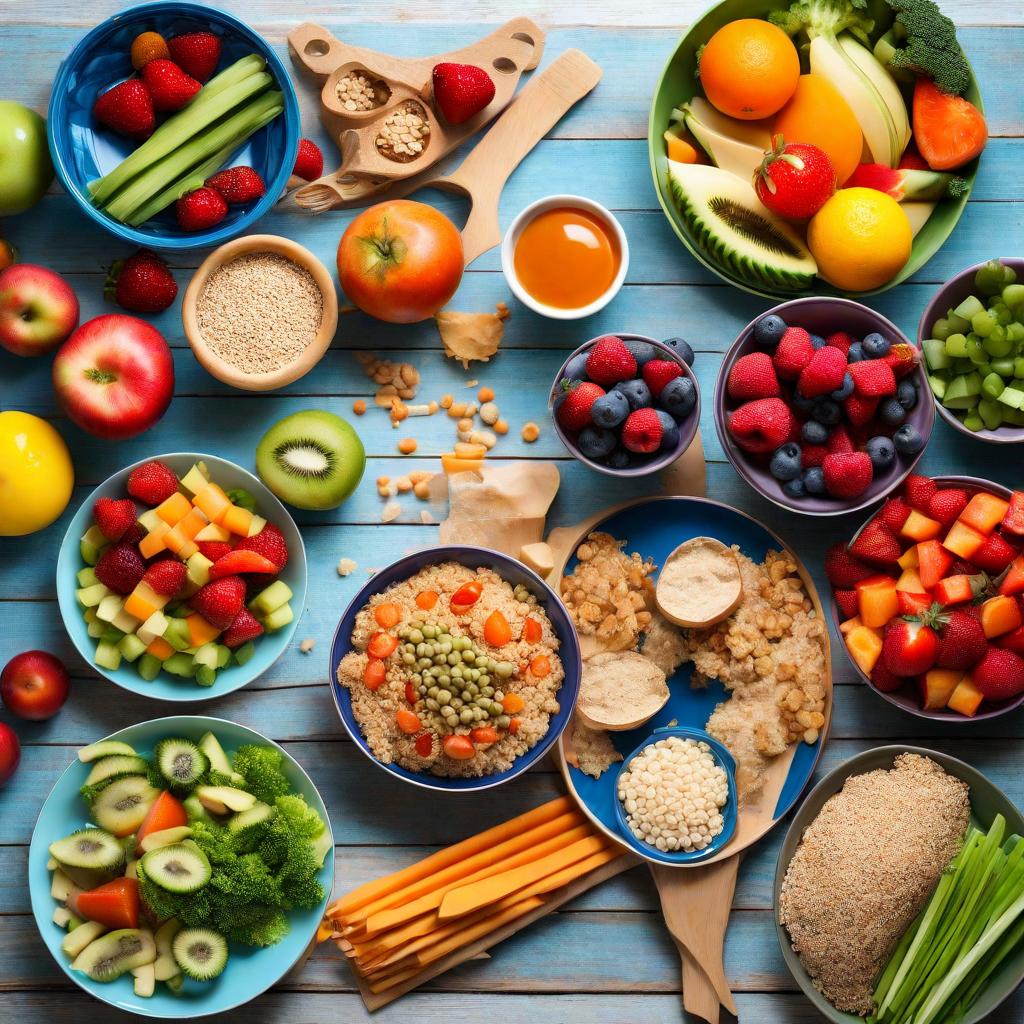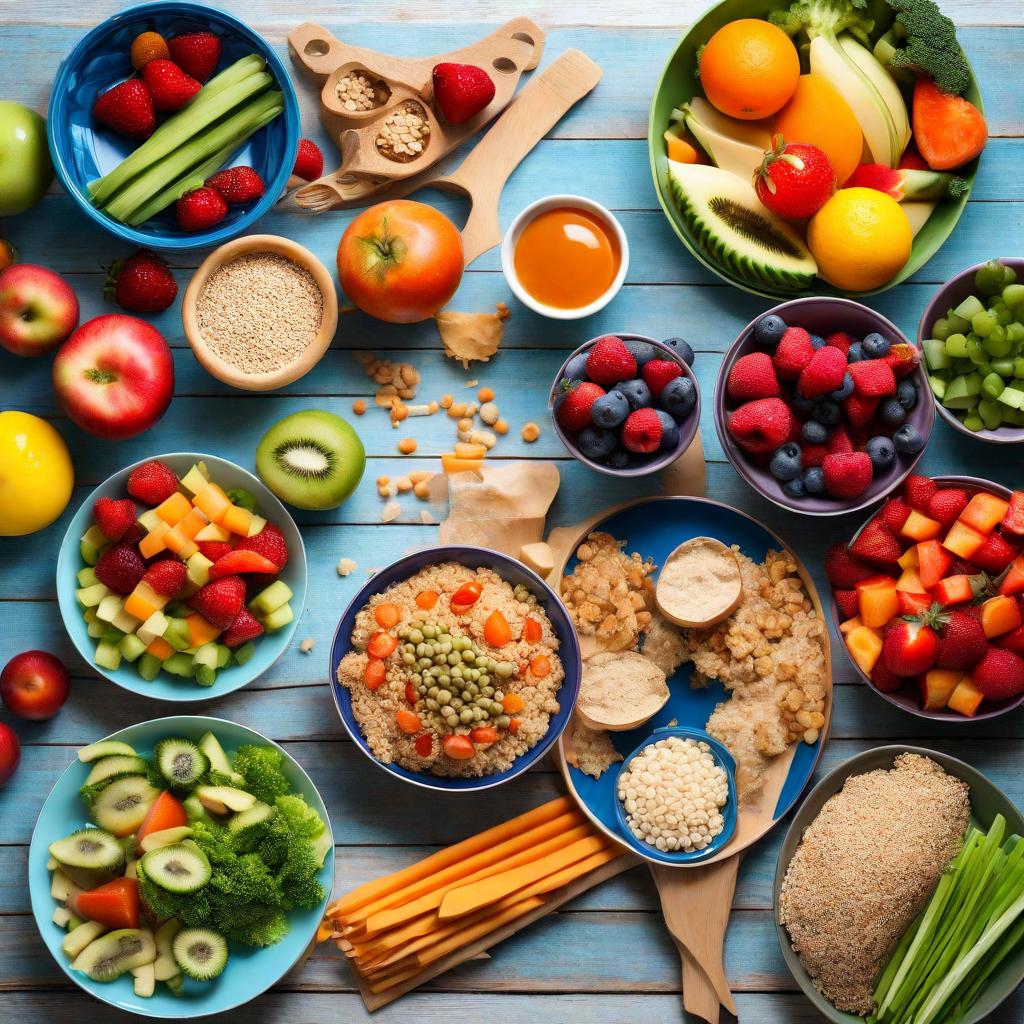
Introduction:
For parents of children with food allergies and digestive issues, meal planning can feel like a constant challenge. Between managing triggers, ensuring nutritional needs are met, and catering to picky palates, the pressure to create healthy and enjoyable meals can be immense. But worry not! With a few simple strategies, you can streamline meal planning, create delicious and nutritious options, and make mealtimes a positive experience for everyone.Digestive Issues
Digestive issues encompass a variety of problems related to the digestive system. Common issues in children include:
- Lactose Intolerance:Difficulty digesting lactose, a sugar found in milk and dairy products, causing gas, bloating, and diarrhea.
- Irritable Bowel Syndrome (IBS): Chronic condition causing abdominal pain, cramping, bloating, diarrhea, and constipation.
- Celiac Disease: An autoimmune disease triggered by gluten, a protein found in wheat, barley, and rye, leading to damage of the small intestine and various symptoms like diarrhea, weight loss, and fatigue.
These conditions can cause discomfort, affect nutrient absorption, and disrupt mealtimes for children.

Impact on Meal Planning
Both food allergies and digestive issues require careful meal planning to ensure your child’s safety, meet their nutritional needs, and create enjoyable mealtimes. Here’s how they impact planning:
- Limited food choices: Certain foods need to be eliminated or restricted, reducing variety.
- Nutritional concerns: Ensuring your child gets all the nutrients they need can be challenging with limited options.
- Mealtime anxiety: For children, fear of reactions or discomfort can make mealtimes stressful.
Top 5 Tips for Easy and Effective Meal Planning with Food Allergies and Digestive Issues for Kids
Tip 1: Embrace Collaboration
Involve your child in the meal planning process! Age-appropriate participation not only empowers them but also helps them feel heard and involved in their dietary needs. Here are some ways to collaborate based on your child’s age:

Younger children (2-5 years old):
Let them choose between two pre-approved options or help with simple tasks like washing vegetables or setting the table.
Elementary-aged children (6-11 years old):
Encourage them to help create the grocery list, choose recipes, or assist with measuring ingredients.
Teenagers (12+ years old):
Involve them in meal planning discussions, allow them to choose some meals for the week, or even delegate responsibility for preparing one meal, teaching them valuable life skills.
Tip 2: Build a Safe Pantry and Fridge
Having a well-stocked pantry and fridge with safe and versatile ingredients forms the foundation of your meal planning. This allows you to whip up easy meals even on busy days, knowing you have safe and healthy options readily available.
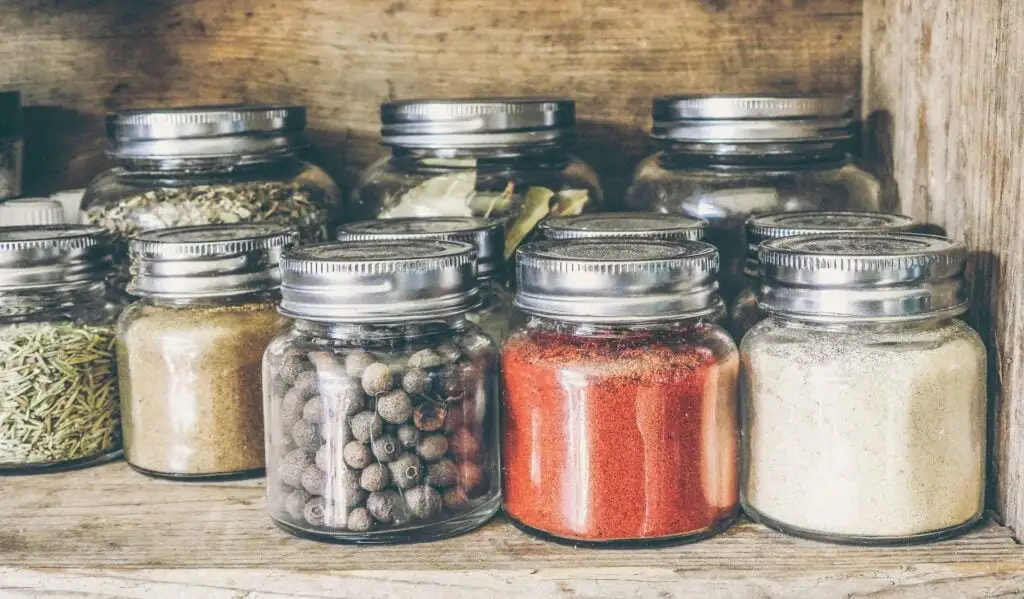
Here’s how to create your safe haven:
Stock up on staples: Keep a variety of grains (e.g., rice, quinoa, pasta), canned beans and lentils, nut and seed butter (if not allergic), healthy fats (e.g., olive oil, avocado), and fruits and vegetables that are safe for your child.
Read labels carefully:
Always scrutinize ingredient lists for potential allergens and hidden triggers. Familiarize yourself with common aliases of allergens and invest in a good magnifying glass if needed.
Utilize frozen options:
Frozen fruits and vegetables offer readily available and affordable options while retaining most of their nutrients. They’re perfect for quick smoothies, stir-fries, or adding to soups and stews.
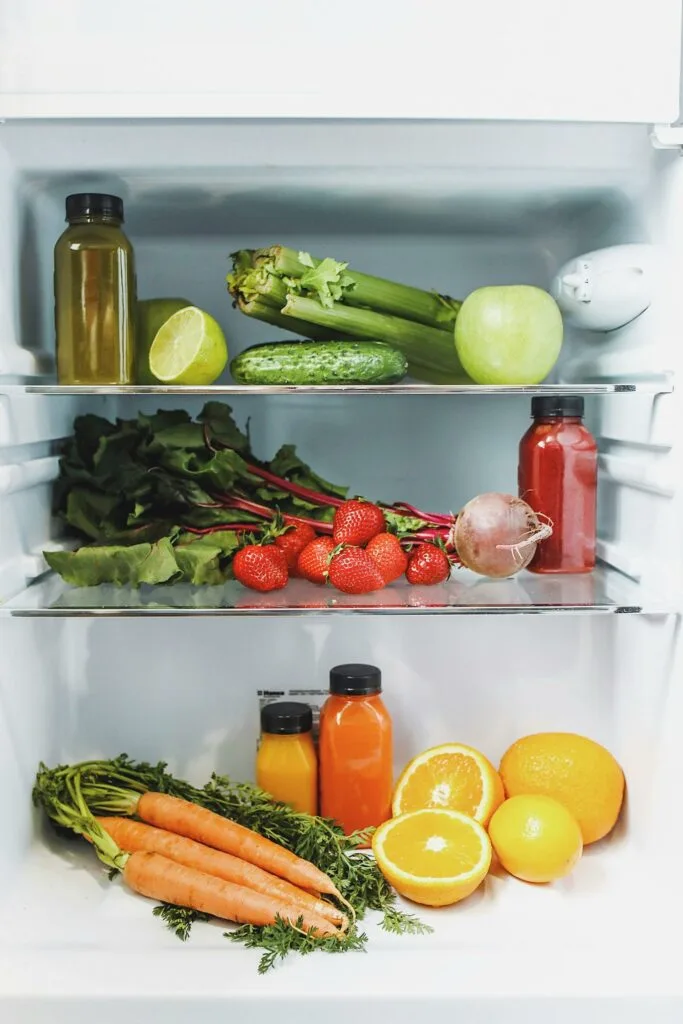
Tip 3: Batch Cooking and Leftovers are Your Friends
Batch cooking is a time-saving technique where you prepare larger quantities of food at once. This allows you to enjoy leftovers throughout the week, minimizing the need for daily cooking and reducing stress.

Here are some batch cooking ideas for kids with food allergies and digestive issues:
Soups and stews: These are fantastic one-pot meals that can be easily customized to be allergy-friendly and packed with nutrients.
Baked casseroles:
Choose protein sources like chicken or fish and combine them with safe vegetables and gluten-free grains for a complete meal.
Breakfast bakes:
Whip up a large egg-based bake with safe vegetables and cheese for a grab-and-go breakfast option throughout the week. Remember, leftovers don’t have to be boring! Get creative by repurposing them into new dishes. Leftover roasted chicken can be transformed into a delicious chicken salad sandwich or used as a topping for a salad.
Tip 4: Embrace Variety within Safe Boundaries
While sticking to safe ingredients is crucial, offering some variety is key to keeping your child engaged and preventing mealtime boredom.
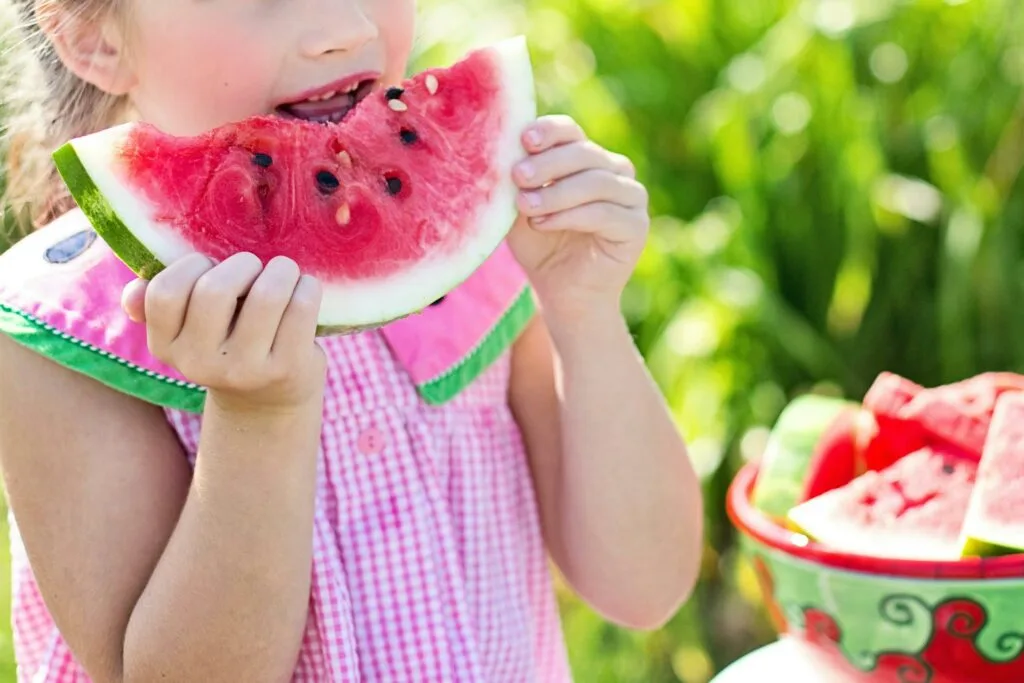
Here are some ways to add variety within safe boundaries:
Explore different ethnic cuisines:
Many cuisines offer naturally allergy-friendly options, such as Indian curries made with coconut milk instead of dairy, or Asian stir-fries with safe vegetables and protein sources.
Get creative with spices and herbs:
Experiment with safe spices and herbs to add flavor and excitement to your dishes.
Play with textures and colors:
Offer a variety of textures (e.g., crunchy, creamy, soft) and vibrant colors on the plate to make meals visually appealing and encourage exploration.
Tip 5: Prioritize Fun and Make Mealtimes a Positive Experience
Mealtimes should be a positive and enjoyable experience for both you and your child. Here are some tips to achieve this:

Involve the whole family:
Encourage everyone to participate in setting the table, helping with age-appropriate tasks, and engaging in conversation during the meal.Make it playful:
Use fun food molds, create edible art with safe ingredients, or have themed meals to spark your child’s interest.
Focus on the experience, not just the food:
Keep mealtimes relaxed and avoid pressuring your child to eat everything on their plate.
The Conclusion
Phew! We’ve thrown a lot of meal-planning magic your way, and hopefully, you’re feeling empowered to tackle those kitchen challenges. Remember, you’re not alone in this journey. Millions of parents navigate food allergies and digestive issues with their little ones, and with these top tips in your arsenal, you’re well on your way to becoming a mealtime master.
Here’s a quick recap of our winning strategies:
Embrace Collaboration:
Get your little sous chefs involved! It empowers them and makes mealtimes a team effort.
Build Your Safe Haven:
Stock your pantry with allergy-friendly staples and become a label-reading pro.
Batch Cooking is Your BFF:
Whip up larger quantities for stress-free leftovers throughout the week.
Spice Up Safe Boundaries:
Explore new flavors, textures, and cuisines while keeping allergy triggers at bay.
Make Mealtimes Fun:
Laughter and positive vibes are the secret ingredients to happy tummies (and less stress for you!).


